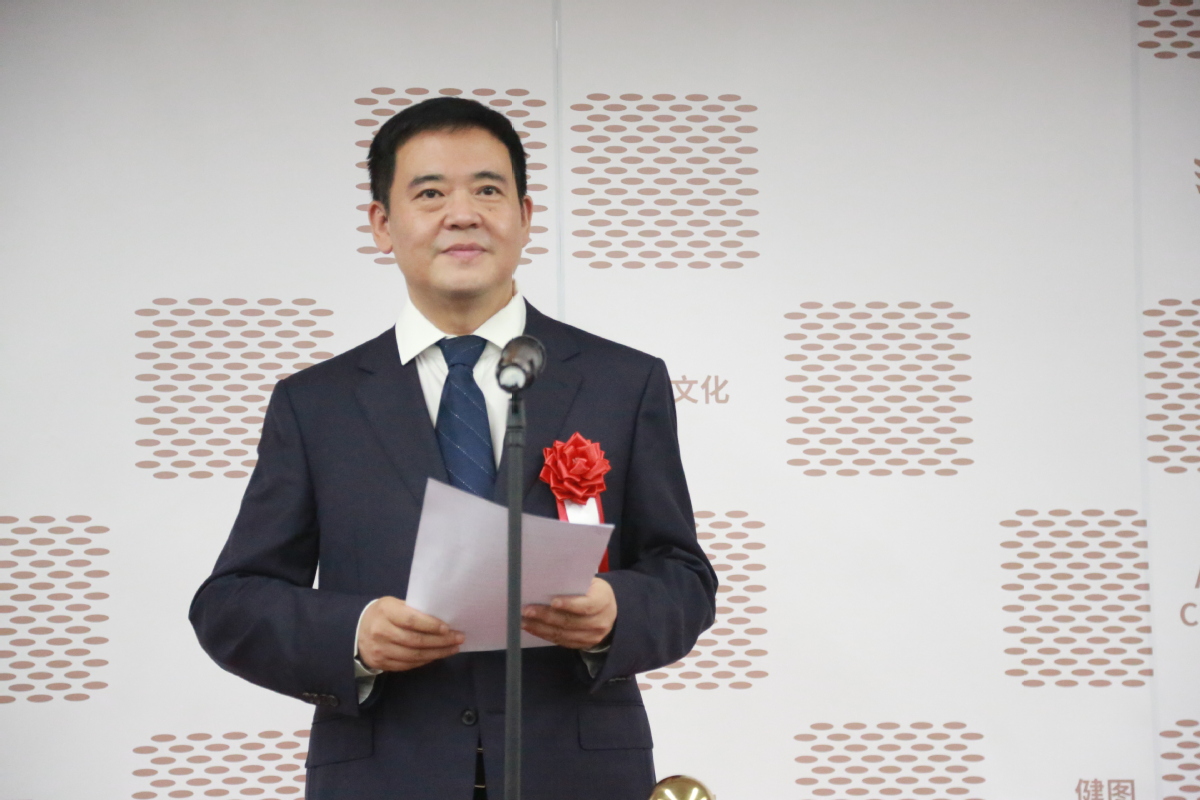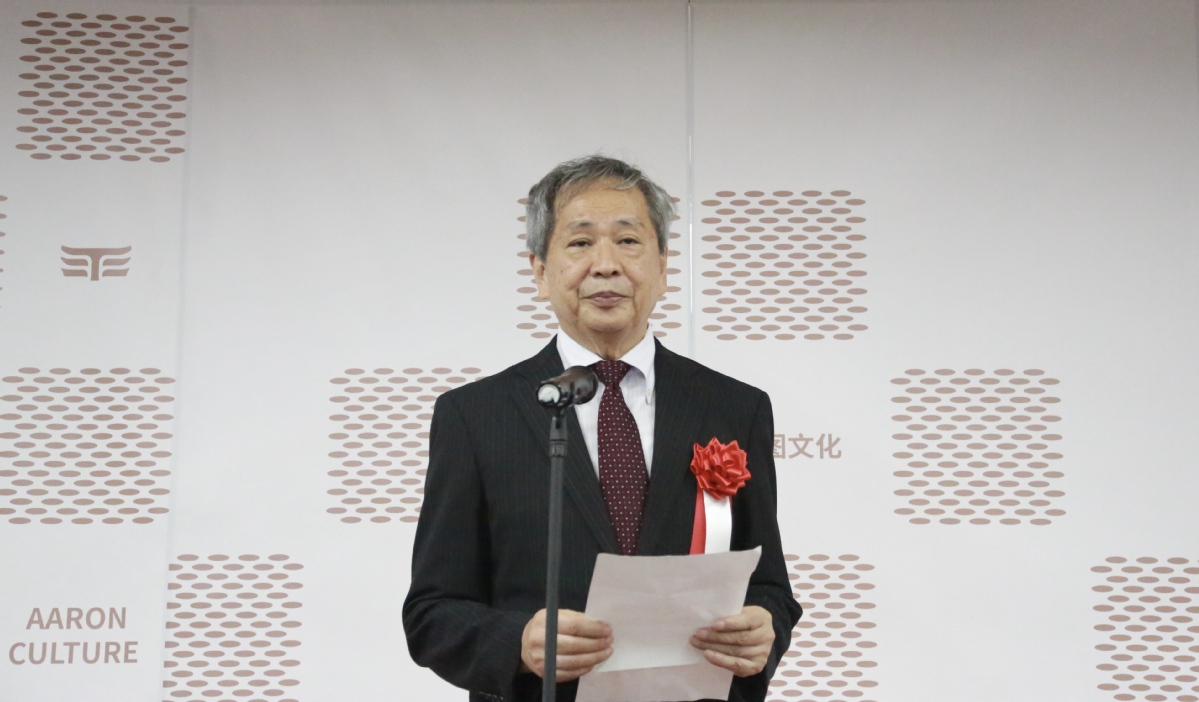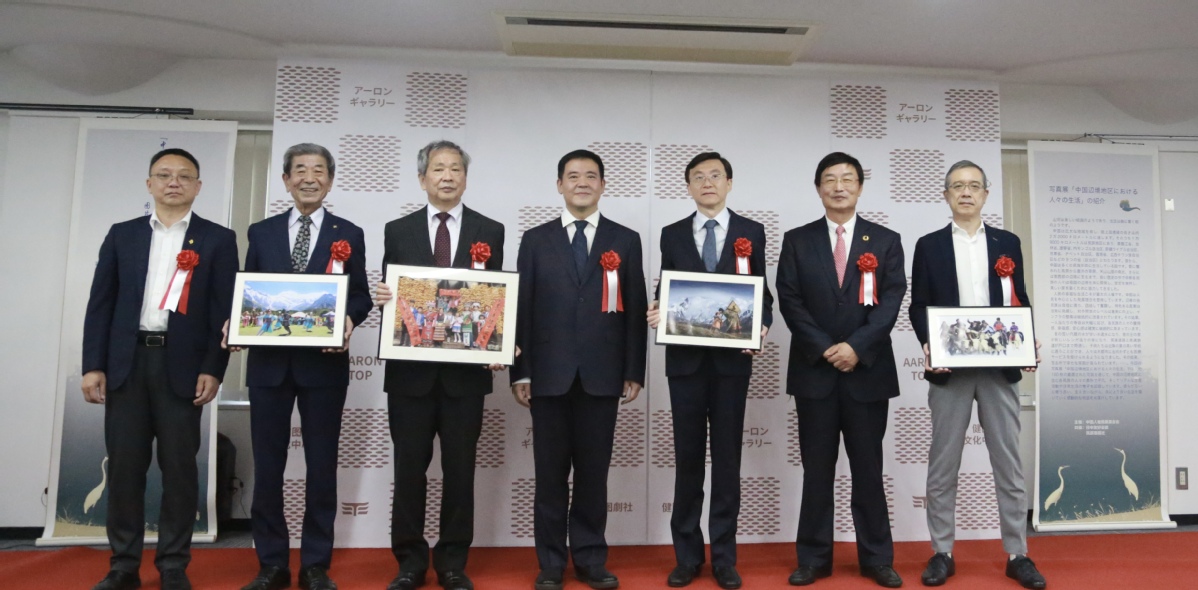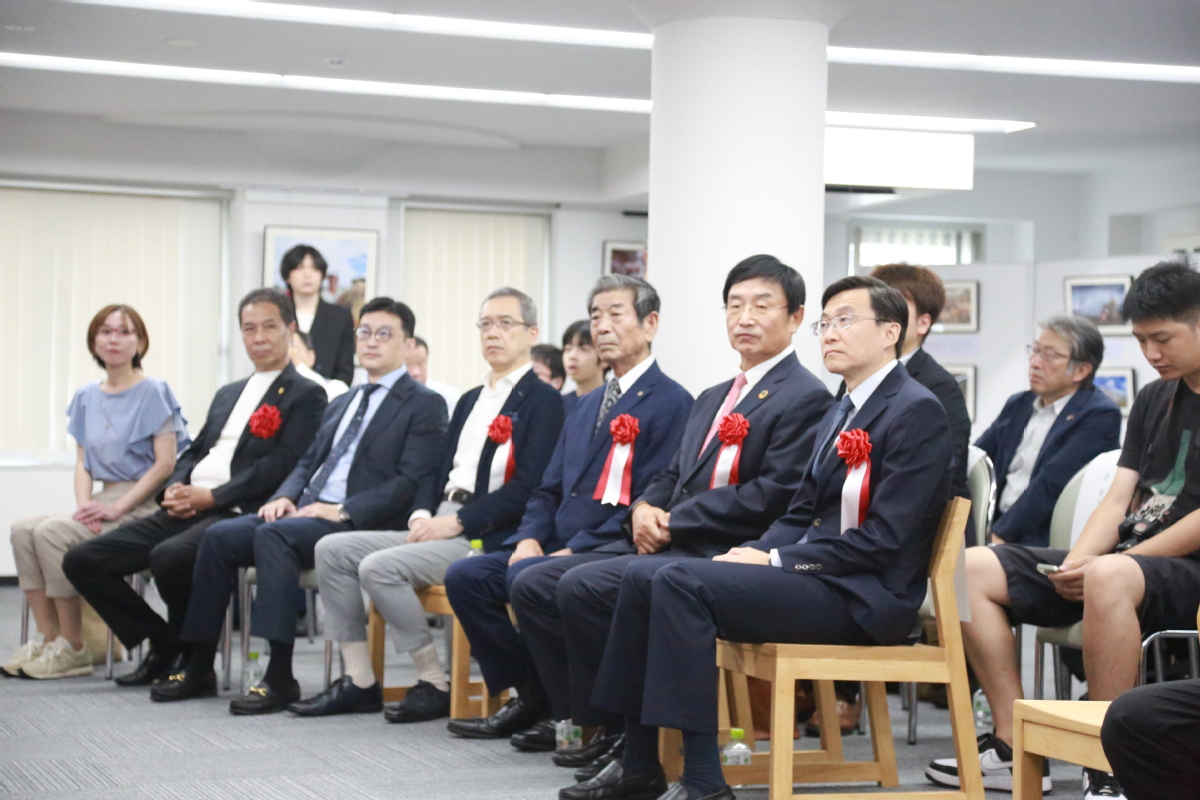
On Sept 21, Huang Xingyuan (left), representative director of China at the Japan-China Friendship Center, and Qin Liang (right), deputy secretary-general of the China Foundation for Human Rights Development, attend a photo exhibition in Tokyo showcasing the lives of people in China's border regions. [Photo by Jiang Xueqing/China Daily]
A photo exhibition showcasing the lives of people in China's border regions opened on Saturday at the Aaron Cultural Center in Tokyo.
Hosted by the China Foundation for Human Rights Development, with co-sponsorship from the Japan-China Friendship Center and the Nationality Pictorial magazine, the exhibition attracted around 60 attendees, including representatives from Japan-China friendship organizations and prominent figures from Japan's academic and cultural circles, at the opening ceremony.
The exhibition will run until Sept 27 and will be open to the Japanese public free of charge.

Qin Liang, deputy secretary-general of the China Foundation for Human Rights Development, speaks at the opening ceremony of a photo exhibition showcasing the lives of people in China's border regions at the Aaron Cultural Center in Tokyo on Sept 21. [Photo by Jiang Xueqing/China Daily]
Qin Liang, deputy secretary-general of the China Foundation for Human Rights Development, spoke at the opening ceremony, noting that China has long been a home to multiple ethnic groups living together. He highlighted how the sons and daughters of these groups have worked collectively to develop China's border regions, building a unified homeland and contributing to the ongoing narrative of one Chinese family united in pursuit of the Chinese Dream.
Qin expressed hope that the exhibition would offer Japanese visitors a glimpse of a credible, respectable, and lovable China, fostering mutual understanding and trust, while promoting a positive atmosphere for peace and friendship between China and Japan.

Masashi Ogawa, president of the Japan-China Friendship Center, speaks at the opening ceremony of the photo exhibition. J[Photo by Jiang Xueqing/China Daily]
Masashi Ogawa, president of the Japan-China Friendship Center, noted that China's 55 ethnic minority groups, many of whom reside in border regions, live alongside the Han majority and other minorities. He emphasized that the exhibition features remarkable photographs that capture the daily lives of these people.
"The photos reveal the stunning natural beauty of these frontier areas, the simple and authentic lives of the residents, and the vibrant costumes and crafts of many ethnic minorities," Ogawa said, adding that the exhibition would leave a lasting impression on Japanese viewers.
Akira Gokita, former managing director of the Tokyo Fuji Art Museum, shared that it was his first time seeing such an extensive collection of photos from various regions of China.
"Through these images, many in Japan will gain direct insight into the daily lives, customs, traditions, and industries of the people in these regions," he said.
Gokita praised the photography, noting the skillful use of composition, lighting, and vibrant colors that enhanced the beauty of the works.

Distinguished guests pose for photos at the opening ceremony of the photo exhibition. [Photo by Jiang Xueqing/China Daily]
Zhang Peilin, minister-counselor at the Chinese embassy in Japan, underscored that this period is a crucial moment for the improvement and development of China-Japan relations. He recalled last year's meeting between the two countries' leaders, where they reached a consensus on enhancing people-to-people exchanges and practical cooperation in various fields.
Zhang explained that the exhibition's nearly 100 photographs illustrate the rapid development of China's border regions, capturing the everyday lives and production activities of the ethnic groups living there, while also reflecting the natural beauty, culture, and customs of these regions.
He expressed the hope that Japanese visitors would use this exhibition as an opportunity to deepen their understanding of China, foster exchanges, and explore China's border areas firsthand to witness the country's growth and the unity of its people.
Huang Xingyuan, representative director of China at the Japan-China Friendship Center, pointed out that exhibitions focusing on the lives of China's ethnic minorities are relatively rare in Japan and other countries. He explained that the main objective of the exhibition is to challenge the stigmatized and stereotyped image of China.
"At this critical time, with China-Japan relations in a delicate and complex state, we organized this exhibition to strengthen people-to-people exchanges and promote mutual understanding," said Huang.

Around 60 people, including representatives from Japan-China friendship organizations and prominent figures from Japan's academic and cultural circles, attend the opening ceremony of the photo exhibition. [Photo by Jiang Xueqing/China Daily]
Yang Zengguo, a researcher at the Center of Japanese Studies at Fudan University in Shanghai, also attended the exhibition. He said: "Since the Sui and Tang dynasties, Japan has been sending envoys to China, and the exchange between our two nations has a long history. We hope this exchange continues."
Yang called on both governments to enhance cooperation in promoting people-to-people exchanges, creating opportunities, and expanding channels for deepening mutual understanding and trust.
Kiyomi Seno, chairman of the Japan-China Society, emphasized the significance of the people living in China's border regions, who frequently interact with neighboring countries.
"Through trade and cultural exchanges, they live much like any other people. These photos give us a clear view of their lives," Seno said.
He also stressed the importance of mutual understanding and communication between Japan and China, highlighting that when unexpected incidents occur, understanding their background and causes is crucial.
"Problems are inevitable in every country, but how we address and resolve them is what truly matters," he said.